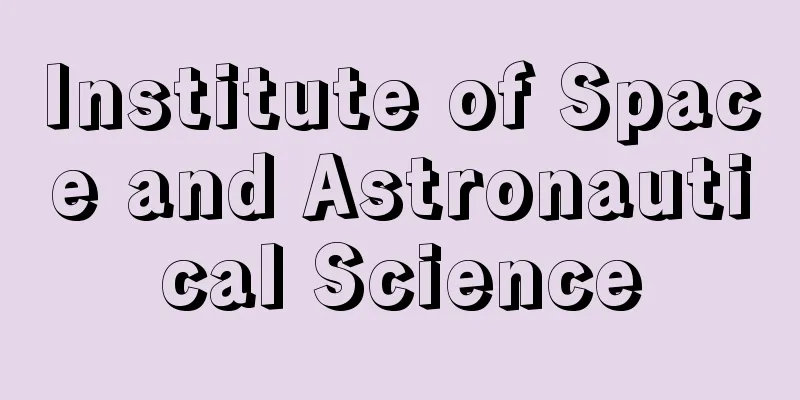Institute of Space and Astronautical Science

|
ISAS is an inter-university research institute attached to the Ministry of Education, Culture, Sports, Science and Technology, whose purpose is to conduct applied research into the theories of space science and space engineering. Its abbreviation is ISAS. Its predecessor was the Space Research Group of the Institute of Industrial Science, University of Tokyo, and in 1964 (Showa 39) it became the Institute of Space and Astronautical Science, University of Tokyo, which successfully launched Japan's first artificial satellite, "Osumi," as well as developing scientific satellites and the M (Mu) rocket for launching them. In 1981, the Institute of Space and Astronautical Science, University of Tokyo, was reorganized as the Institute of Space and Astronautical Science, becoming a national research institute under the jurisdiction of the Ministry of Education, Culture, Sports, Science and Technology, and then came under the Ministry when the Ministry of Education, Culture, Sports, Science and Technology was established in January 2001 (Heisei 13). Including the time of the Institute of Space and Astronautical Science, it had launched 31 scientific satellites by 2010. The Institute of Space and Astronautical Science (ISAS) is headquartered in Sagamihara, Kanagawa Prefecture, and also has facilities such as the Kagoshima Space Center (now the Uchinoura Space Center), the Noshiro Rocket Test Site, the Sanriku Balloon Center, and the Usuda Space Center. Its main activities include research and development of artificial satellites for scientific observation and the rockets that launch them, research and development of balloons and sounding rockets, and promotion of international cooperative research projects, and it played a central role in Japan's space science and space engineering research. In October 2003, it was merged with the National Space Development Agency of Japan (NASDA) and the National Aerospace Laboratory of Japan (NAL) to become the Institute of Space and Astronautical Science, a division of the new independent administrative institution, the Japan Aerospace Exploration Agency (JAXA), and in April 2010, it was renamed back to the Institute of Space and Astronautical Science. [Hajime Hiraki and Akira Kubozono] [Reference items] | | | | | | |Source: Shogakukan Encyclopedia Nipponica About Encyclopedia Nipponica Information | Legend |
|
宇宙理学および宇宙工学の学理およびその応用研究を行うことを目的とした文部科学省附属の大学共同利用機関。略称はISAS(アイサス)。前身は東京大学生産技術研究所の宇宙研究グループで、1964年(昭和39)東京大学宇宙航空研究所となり、日本初の人工衛星「おおすみ」の打上げに成功したほか、科学衛星およびその打上げ用のM(ミュー)ロケットの開発を行った。1981年に東京大学宇宙航空研究所は宇宙科学研究所に改組され、文部省管轄の国立研究機関となったが、さらに2001年(平成13)1月の中央省庁再編による文部科学省の発足に伴い、同省の傘下となった。宇宙航空研究所時代も含めて、2010年までに科学衛星31個を打ち上げた。 宇宙科学研究所の本部は神奈川県相模原(さがみはら)市にあり、そのほか鹿児島宇宙空間観測所(現、内之浦宇宙空間観測所)、能代(のしろ)ロケット実験場、三陸大気球観測所、臼田(うすだ)宇宙空間観測所などの施設があった。おもな業務は、科学観測のための人工衛星およびそれを打ち上げるロケットの研究開発、大気球、観測ロケットの研究開発、国際協力研究事業の推進などで、日本の宇宙理学、宇宙工学研究の中核的役割を果たした。2003年(平成15)10月、宇宙開発事業団(NASDA)および航空宇宙技術研究所(NAL)と統合し、新たな独立行政法人、宇宙航空研究開発機構Japan Aerospace Exploration Agency(JAXA(ジャクサ))の一部門、宇宙科学研究本部となり、さらに2010年4月にはその名称を元の宇宙科学研究所と改称した。 [平木 一・久保園晃] [参照項目] | | | | | | |出典 小学館 日本大百科全書(ニッポニカ)日本大百科全書(ニッポニカ)について 情報 | 凡例 |
>>: Cosmochemistry - Cosmochemistry
Recommend
Calcite - houkaiseki (English spelling) calcite
CaCO 3 . A type of anhydrous carbonate mineral. He...
Skill acquisition allowance - Ginoushuu Tokuteate
A type of job seeker benefit stipulated in the Emp...
Young Prince - Nyakuoji
One of the twelve Kumano shrines enshrined in the...
Anshar
...The process by which Ashur transformed into th...
Tamoya haplonema (Fire jellyfish)
A coelenterate (Cnidaria) of the family Acanthozoi...
Stanhopea (English spelling)
An evergreen orchid of the Stanhopea genus of the ...
Oil paints
〘 noun 〙 Paint used for painting oil paintings ③. ...
Sittard
... The older stage of the Danubian culture (Chil...
Sol (English spelling)
(1) A woman in Norse mythology who drives a chario...
Sympathetic Eye - Kikōkangan
...Behcet's disease and Harada's disease ...
Rice rack - scissors
One of the methods for drying rice after it is ha...
Prosper Mérimée
French author. Born in Paris on September 28th. H...
Hammer of Lightning - Kaminari no Tsuchi
...Thus, it is believed that thunder is said to t...
Unzen Graben - Unzenchiko
…Shimabara City is located at the eastern foot of...
MEP - Multi-Economy Program
Member of the European Parliament : Members of the...









